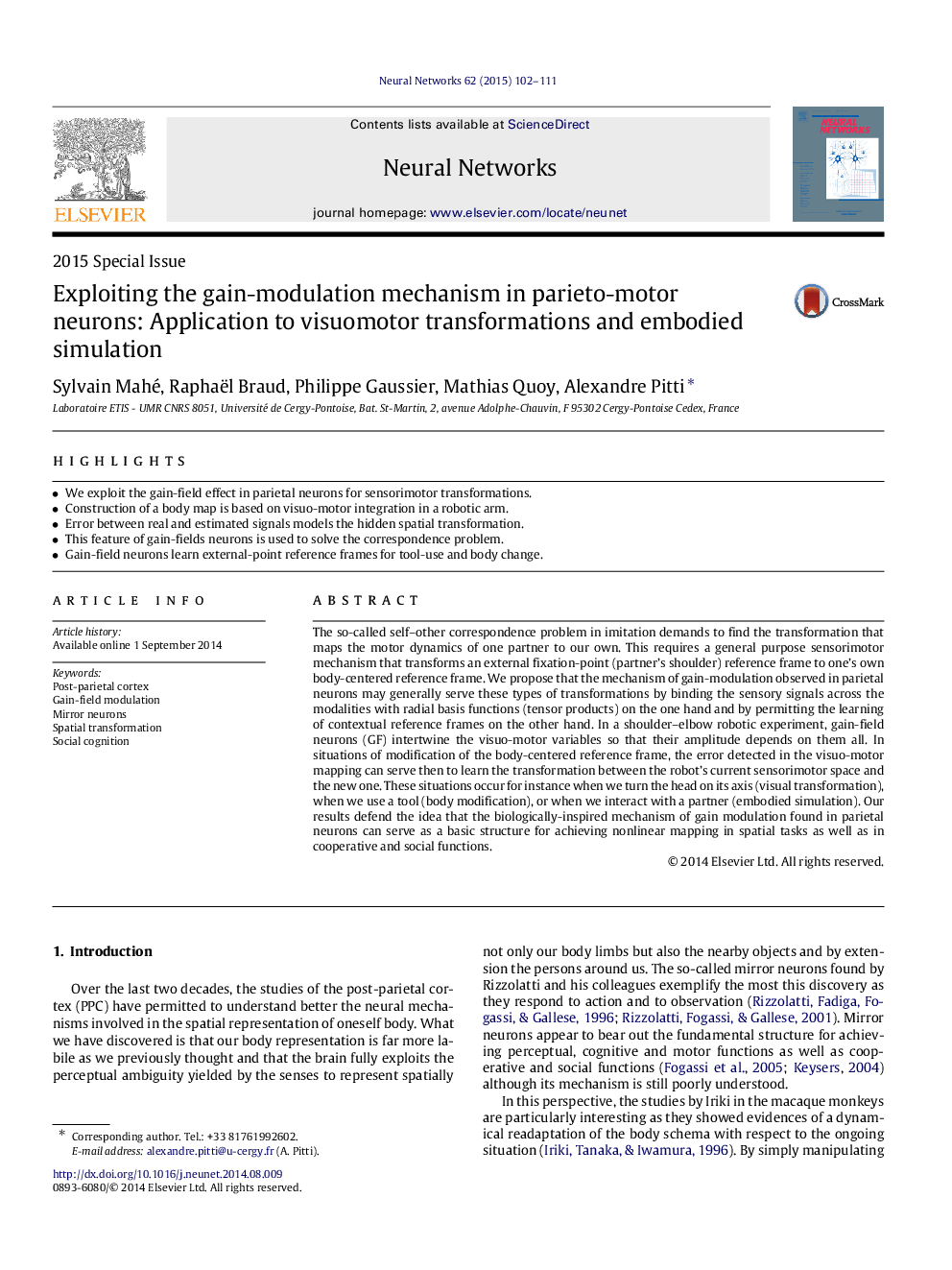| کد مقاله | کد نشریه | سال انتشار | مقاله انگلیسی | نسخه تمام متن |
|---|---|---|---|---|
| 404168 | 677393 | 2015 | 10 صفحه PDF | دانلود رایگان |
• We exploit the gain-field effect in parietal neurons for sensorimotor transformations.
• Construction of a body map is based on visuo-motor integration in a robotic arm.
• Error between real and estimated signals models the hidden spatial transformation.
• This feature of gain-fields neurons is used to solve the correspondence problem.
• Gain-field neurons learn external-point reference frames for tool-use and body change.
The so-called self–other correspondence problem in imitation demands to find the transformation that maps the motor dynamics of one partner to our own. This requires a general purpose sensorimotor mechanism that transforms an external fixation-point (partner’s shoulder) reference frame to one’s own body-centered reference frame. We propose that the mechanism of gain-modulation observed in parietal neurons may generally serve these types of transformations by binding the sensory signals across the modalities with radial basis functions (tensor products) on the one hand and by permitting the learning of contextual reference frames on the other hand. In a shoulder–elbow robotic experiment, gain-field neurons (GF) intertwine the visuo-motor variables so that their amplitude depends on them all. In situations of modification of the body-centered reference frame, the error detected in the visuo-motor mapping can serve then to learn the transformation between the robot’s current sensorimotor space and the new one. These situations occur for instance when we turn the head on its axis (visual transformation), when we use a tool (body modification), or when we interact with a partner (embodied simulation). Our results defend the idea that the biologically-inspired mechanism of gain modulation found in parietal neurons can serve as a basic structure for achieving nonlinear mapping in spatial tasks as well as in cooperative and social functions.
Journal: Neural Networks - Volume 62, February 2015, Pages 102–111
